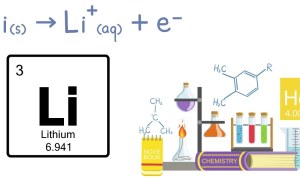In the world of chemistry, the proper choice of reagents and conditions can make all the difference in the success of an experiment. One such example is the acidification of potassium permanganate (KMnO₄) solutions. Potassium permanganate is a strong oxidizing agent, often used in redox reactions. However, for these reactions to occur effectively, the solution usually needs to be acidified. This is where sulfuric acid (H₂SO₄) comes into play.
But why exactly is H₂SO₄ used to acidify a KMnO₄ solution? Let’s dive deeper into this question and understand the reasoning behind it.
Potassium Permanganate: A Powerful Oxidizer
Potassium permanganate (KMnO₄) is a deep purple crystalline compound that is known for its strong oxidizing properties. In redox reactions, KMnO₄ can either oxidize other substances or be reduced itself, typically in a solution. When it’s used in reactions, the oxidation state of manganese (Mn) changes, and depending on the pH of the solution, the reduced product can vary.
In alkaline or neutral solutions, KMnO₄ does not react as easily or as effectively because the manganese in KMnO₄ (Mn⁷⁺) is already in a highly oxidized state. To get the most out of KMnO₄ in redox reactions, it’s essential to create an acidic environment.
The Role of Sulfuric Acid (H₂SO₄)
Sulfuric acid (H₂SO₄) is commonly used to acidify the KMnO₄ solution because of several key factors:
- Facilitates the Reduction of Mn⁷⁺ to Mn²⁺
- In an acidic environment, KMnO₄ is more likely to undergo reduction. The manganese ion (Mn⁷⁺), found in KMnO₄, is reduced to a lower oxidation state, often Mn²⁺ (manganese(II) ion), in acidic solutions. This reduction is necessary for the KMnO₄ to function as an effective oxidizer in redox reactions.
- In acidic conditions, potassium permanganate can be reduced to Mn²⁺, which is colorless. This is essential for many analytical and titrimetric procedures.
- Stabilizes the Oxidizing Nature of KMnO₄
- Potassium permanganate remains stable in acidic solutions. In neutral or alkaline solutions, it is much less stable and may decompose or produce side products that interfere with the intended reaction.
- H₂SO₄ provides a stable acidic medium in which KMnO₄ can perform its role as a strong oxidizing agent without decomposing or producing unwanted side reactions.
- Improves the Reaction Efficiency
- The acidic medium ensures that the oxidation reactions proceed efficiently by increasing the solubility of the species involved. When KMnO₄ is acidified with H₂SO₄, it can more readily oxidize other substances, such as in the analysis of reducing agents or in redox titrations.
- Prevents the Formation of MnO₂ (Manganese Dioxide)
- In alkaline or neutral solutions, KMnO₄ can form manganese dioxide (MnO₂), a brown precipitate, which would make the reaction less effective and introduce impurities. Acidification with sulfuric acid ensures that this doesn’t happen, allowing for a clean and efficient reaction.
Examples of Reactions Involving Acidified KMnO₄
One classic example where KMnO₄ is acidified with sulfuric acid is in redox titrations, particularly for determining the concentration of reducing agents like hydrogen peroxide (H₂O₂) or oxalic acid. In these titrations, KMnO₄ in an acidic solution serves as the titrant, and the purple color of the solution fades as the KMnO₄ is reduced during the reaction.
For instance, when hydrogen peroxide is titrated with KMnO₄:
- In the acidic medium, KMnO₄ (Mn⁷⁺) is reduced to Mn²⁺.
- The hydrogen peroxide (H₂O₂) is oxidized to water (H₂O), and the purple color of the KMnO₄ solution disappears as it is consumed in the reaction.
Conclusion
Sulfuric acid (H₂SO₄) is used to acidify KMnO₄ solutions primarily to facilitate the reduction of Mn⁷⁺ to Mn²⁺, stabilize the oxidizing nature of potassium permanganate, and ensure the reaction proceeds efficiently without unwanted side products like manganese dioxide. Acidifying the solution creates the perfect conditions for KMnO₄ to act as a powerful oxidizing agent in various redox reactions, making it an essential step in many chemical processes, including titrations and analytical procedures.
So, the next time you work with KMnO₄ in a reaction, remember that the addition of sulfuric acid isn’t just a formality—it’s key to ensuring the reaction goes smoothly and effectively!




Leave a comment